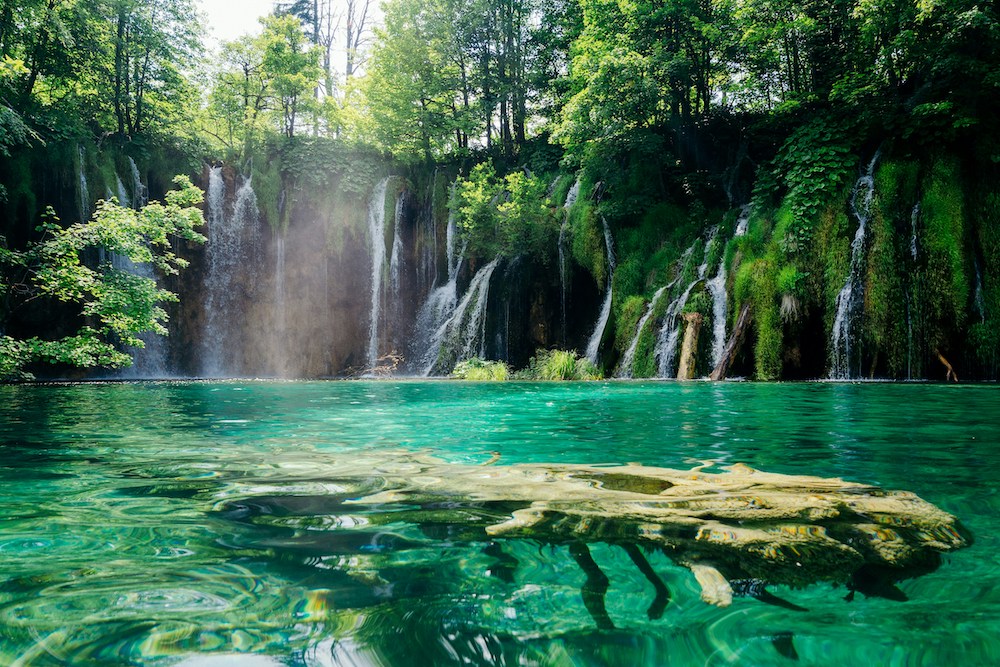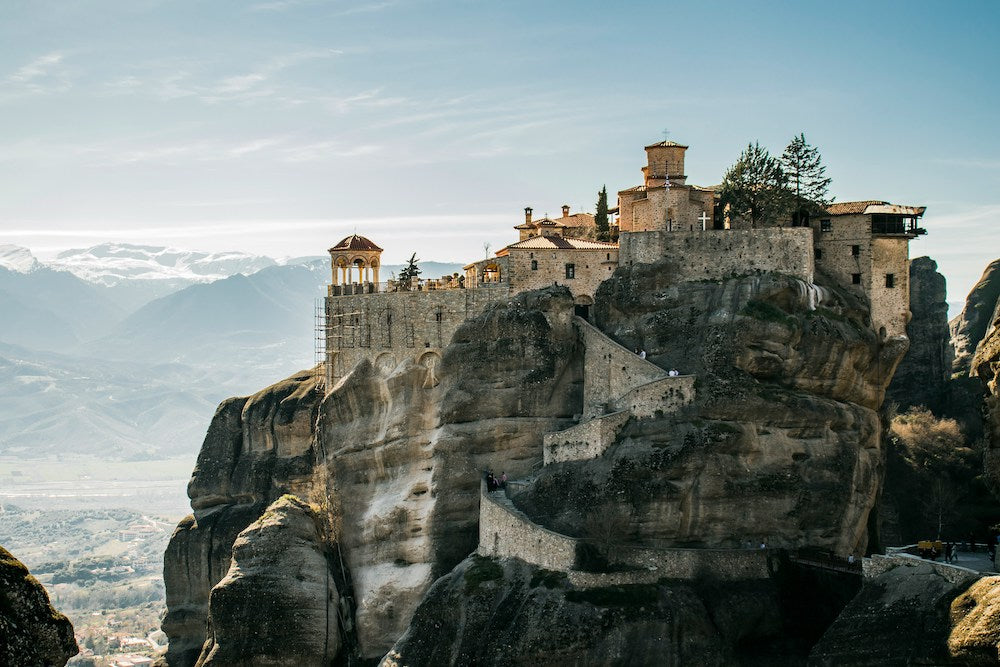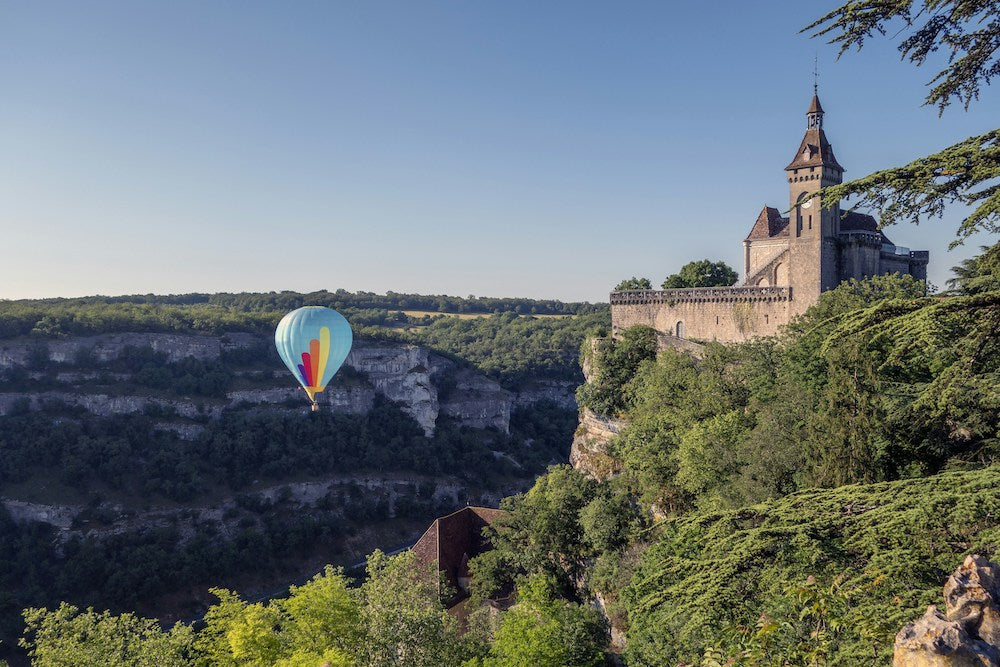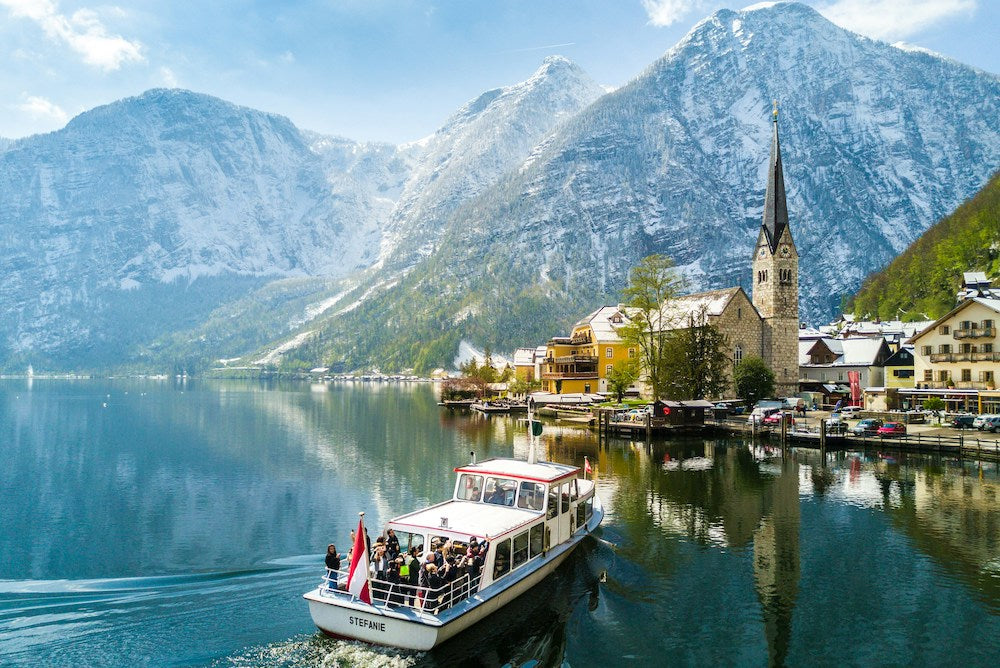Europe, a continent that breathes history and culture in every corner, often surprises travelers with unexpected destinations that defy expectations. While cities like Paris, Rome and London are iconic and more explored destinations, there are lesser-known places that offer equally captivating experiences. From surreal rock formations to underground cities, here are five places that are sure to surprise you with their location in Europe.
-
Cappadocia, Türkiye: Underground Mysteries - Exploring the Hidden Cities of Cappadocia
Cappadocia, in the central Anatolia region of Turkey, emerges as a treasure that defies conventional description with its surreal landscape. Renowned for its unrivaled rock formations, ranging from rock cones to valleys and fairy chimneys, this region stands as an extraordinary destination. Its landscapes have been shaped over millennia by volcanic activity and erosion, creating a panorama that seems straight out of a fantasy world.

However, beyond its impressive landscape, Cappadocia is home to an underground secret that fascinates visitors: its underground cities. These incredible rock-cut structures date back more than 3,000 years and offer a captivating window into ancient life. Fulfilling vital roles as shelters during periods of conflict and safe warehouses, these underground cities are living testaments to human engineering and adaptation. With their intricate tunnels and rooms carved into the rock, exploring these historic labyrinths is like taking a trip back in time.
In addition to its intriguing history and unique geology, Cappadocia offers opportunities for unforgettable experiences. One of the most notable is to fly in a hot air balloon over its lunar landscape at sunrise or sunset. From above, panoramic views of the rock formations and picturesque valleys unfold, creating a visual spectacle that lingers in the memory. Cappadocia is thus revealed as a hidden gem in Europe that attracts both adventurers and history lovers, promising a unique and unforgettable experience.
-
Croatia, aquatic paradises: discovering the beauty of the Plitvice Lakes
The Plitvice Lakes National Park, located in the heart of Croatia, emerges as a natural spectacle that defies any attempt at description. This corner of nature is a true treasure, where interconnected waterfalls and crystal-clear lakes combine to form a landscape that seems to have been sculpted by the gods themselves. But what really captivates is its ability to transform into a completely different setting with each season of the year.
In spring, the park becomes a burst of life, with a palette of greens so vibrant it almost seems unreal. Trees and wildflowers burst into a profusion of color, creating an atmosphere of exuberance and renewal. Every corner of the park is infused with the fresh aroma of nature in full awakening. It is the perfect time to witness how life is reborn in every corner of the park, from the most remote trails to the shores of the crystalline lakes.

On the other hand, in winter, the Plitvice Lakes National Park transforms into a dream world covered by a blanket of snow. The frozen waterfalls seem suspended in time, and the lakes take on a unique stillness and serenity. The landscape is dressed in white, creating a picture worthy of a fairy tale that invites visitors to immerse themselves in the magic of winter.
But the true richness of this natural sanctuary goes beyond its impressive appearance. The Plitvice Lakes are home to a surprising diversity of wildlife. From majestic bears to elusive wolves and a wide variety of rare birds, this place is home to a fascinating animal community that thrives in harmony with its environment. Visitors have the unique opportunity to observe these creatures in their natural habitat while exploring the numerous trails that wind along the lakes and waterfalls, creating an immersive experience that leaves an indelible mark on the hearts of those who experience it.
In addition to its ecological value, Plitvice Lakes National Park is steeped in rich history and culture. Inside are archaeological remains dating back to the Iron Age, as well as ancient human settlements that reveal the deep connection that people have had with this land over the centuries. Each stone, each path, tells a story that dates back to time immemorial, inviting visitors to immerse themselves in the past and contemplate the eternal beauty of this unique place in the world.
-
Ascending to the divine: the Meteora monasteries in the heights of Greece
The majestic monasteries of Meteora stand imposingly on rock pillars that defy gravity, reaching dizzying heights of up to 400 meters. These colossal structures, sculpted by nature over millions of years, are primarily composed of conglomerate and sandstone, silent witnesses to the relentless erosion and tectonic activity that have shaped this unique landscape. The name "Meteora", which means "suspended in the air" in Greek, accurately evokes the surreal feeling inspired by these monasteries that defy conventional architectural logic.

Built in the 14th century by Orthodox monks seeking spiritual isolation, the Meteora monasteries represent an unparalleled architectural achievement. The construction of these sacred monuments was carried out with admirable determination, as the monks faced daunting challenges. Using ropes, nets and rudimentary ladders, they ventured to access these remote locations, carrying construction materials with them through narrow and dangerous passages. The dedication and faith that drove the erection of these monasteries in such a hostile environment are simply astonishing, testifying to the devotion of those who sought spiritual communion on high.
Today, only six of the original twenty-four monasteries remain standing and open to the public, each housing priceless religious and cultural treasures. Visitors have the privilege of contemplating the religious paintings that adorn its centuries-old walls, the ancient manuscripts that treasure ancestral wisdom, and the sacred relics that evoke the mystery of faith. In addition to its religious and historical importance, Meteora also attracts intrepid climbers and adventurous hikers who long to challenge the heights and explore the winding trails that wind between the imposing rock formations, thus immersing themselves in the natural grandeur of this unique place in the world.
-
France, between heaven and Earth: the medieval charm of Rocamadour
Rocamadour, anchored in the southwest of France, transcends the mere label of "medieval village." Its location atop a limestone cliff not only offers spectacular scenery, but also infuses a mystical dimension to its history, as if fate itself had sculpted this place to connect with the celestial.
The architecture of Rocamadour is a monument to human skill and fervent religious devotion. Its narrow cobblestone streets, winding between limestone houses, tell ancient stories with each worn cobblestone. But what truly sets Rocamadour apart are its shrines and chapels embedded in the rock, emitting a sacred aura that has attracted pilgrims for centuries seeking spiritual solace and sometimes even tangible miracles.
The panoramic view of Rocamadour from the valley is simply stunning, especially at sunset, when the sun slowly slides behind the mountains and the lights begin to twinkle in the village, creating a fairytale atmosphere. It is as if the town itself were imbued with magic, as if every corner breathed the nostalgia of a medieval past immortalized in time.

But Rocamadour is not limited to being a mere monument of beauty and devotion. It is a vibrant cultural centre, where festivals and events celebrate its rich history and deep-rooted traditions. Visitors have the opportunity to explore its museums, delight in exquisite local cuisine and immerse themselves in the unique atmosphere of this hidden treasure in the heart of France. Each alley tells a story, each chapel contains a secret and each sunset provides an experience that lasts in the memory long after having left this dream enclave.
-
Salt and charm: the historical legacy of Hallstatt in the Austrian Alps
Hallstatt, a hidden treasure in the Austrian Alps, captivates visitors with its picturesque charm and historical legacy. This Alpine village, nestled on the shores of Lake Hallstättersee, offers a postcard view in any season. Its vibrantly colored wooden houses are reflected in the calm waters of the lake, while the imposing mountains that surround it add an aura of majesty.
However, what makes Hallstatt truly unique is its fascinating history linked to the salt industry. For millennia, the nearby salt mines have been a source of wealth and prosperity for the region. Salt mining in Hallstatt dates back to the Bronze Age, making this town one of the oldest salt mining sites in the world. Visitors can delve deep into the salt mines to discover traditional extraction methods and learn about the cultural and economic importance of this resource throughout history.
In addition to its fascinating salt heritage, Hallstatt also offers opportunities to explore its rich cultural heritage. Visitors can stroll through the town's narrow cobblestone streets, discover charming historic churches, and visit the Hallstatt Museum to immerse themselves in the region's history and culture.

For those looking for a more active experience, the area around Hallstatt offers a variety of outdoor activities, including hiking, cycling and boating on the lake. Whether taking in the stunning views from a mountaintop or diving into the crystal-clear waters of the lake, the unspoilt nature of the Austrian Alps invites adventure and exploration.
Adventure to discover the European continent and discover these undiscovered gems
Adventure to discover the European continent and immerse yourself in a world of hidden wonders that will leave you amazed. These are just a few examples of the many amazing places Europe has to offer. From stunning natural landscapes to architectural and cultural treasures, the European continent continues to captivate travelers with its diversity and unexpected beauty.
From the stunning rock formations of Cappadocia in Turkey to the lush lakes of Plitvice in Croatia, every corner of Europe offers a unique experience. Delve into the underground cities of Cappadocia and discover the secrets of ancient civilizations dating back millennia. Explore the winding trails of Plitvice Lakes National Park and marvel at the majesty of its interconnected waterfalls and crystal-clear lakes.
Head to Greece and climb to the heights of Meteora, where Orthodox monasteries cling to rock pillars rising into the sky. Let yourself be carried away by the spirituality and supernatural beauty of this unique place. Then, cross the border into France and visit Rocamadour, a medieval town suspended between heaven and earth. Walk through its narrow cobblestone streets and discover the rich religious history that permeates its ancient walls.
Finally, head to Austria and discover the charm of Hallstatt, where history intertwines with the natural beauty of the Alps. Delve into the depths of ancient salt mines and learn about the crucial role they played in the development of the region. Take in the serenity of Lake Hallstättersee and marvel at the panoramic views of the surrounding Alpine peaks.
These destinations are just the beginning of an unforgettable journey through Europe, a continent that never ceases to surprise with its diversity and cultural legacy. From ancient times to modernity, Europe offers something for all tastes and preferences. So get ready to venture out and discover the undiscovered gems that await you on this fascinating continent.
FREQUENTLY ASKED QUESTIONS ABOUT DESTINATIONS IN EUROPE
What is the best time to visit Europe?
The best time to visit Europe depends on your personal preferences and the countries you want to visit. In general, spring (March to May) and fall (September to November) are usually ideal times. During these seasons, the weather is pleasant, there are fewer crowds, and prices may be lower than in the peak summer season.
What currency is used in Europe?
In most countries of the European Union, the official currency is the euro (€). However, there are some exceptions, such as the United Kingdom, which uses the pound sterling (£), and Switzerland, which uses the Swiss franc (CHF). It is important to check the official currency of the country you plan to visit before traveling.
Is English spoken well throughout Europe?
The level of English varies throughout Europe depending on the country and region. Generally, in large cities and tourist areas, you are more likely to find people who speak fluent English. However, in rural areas or in countries where English is not the primary language, you may find fewer people who speak English. In many cases, especially in tourist locations, services and signs are available in English to facilitate communication with foreign visitors.
What are the countries with the best gastronomy in Europe?
Europe is known for its culinary diversity, and several countries stand out for their excellent gastronomy. Some of the countries with the best gastronomy in Europe include: France, Italy, Spain, Portugal and Greece.


















































